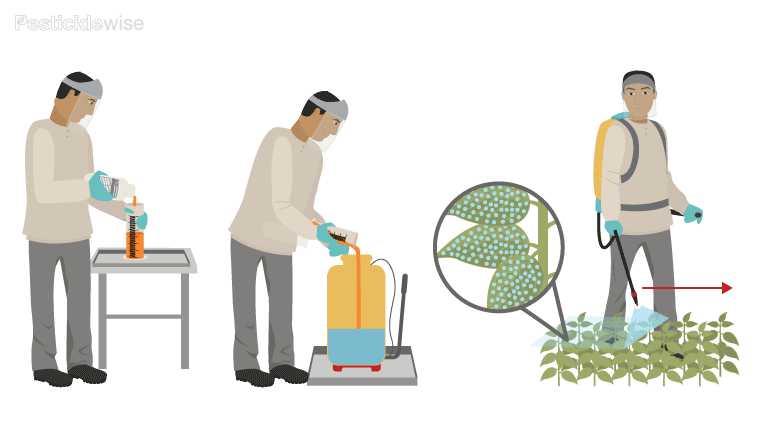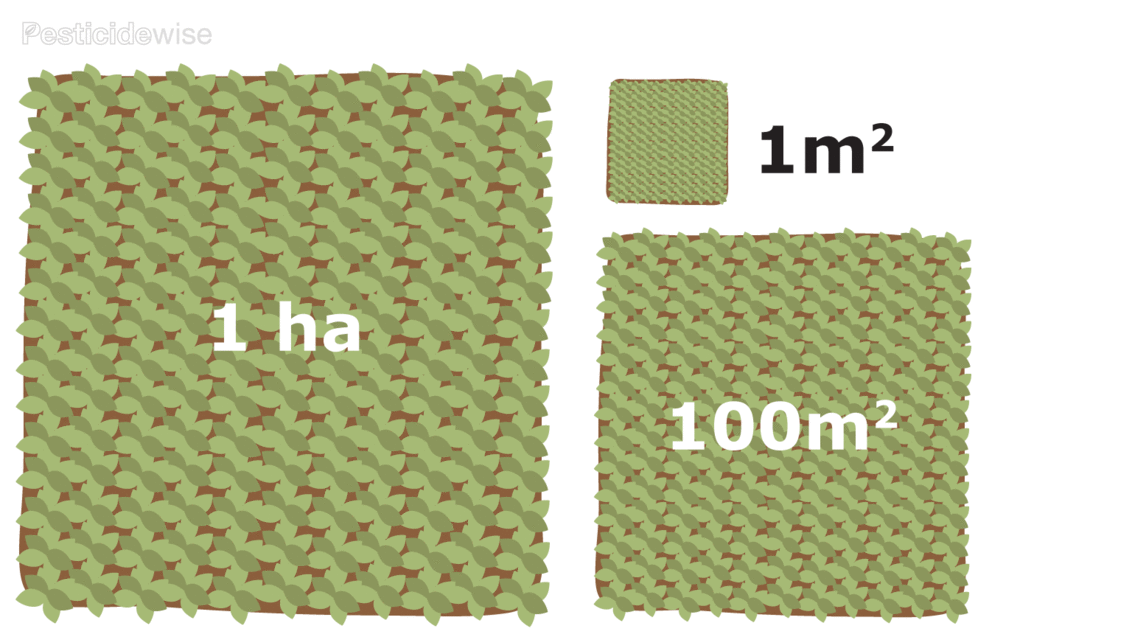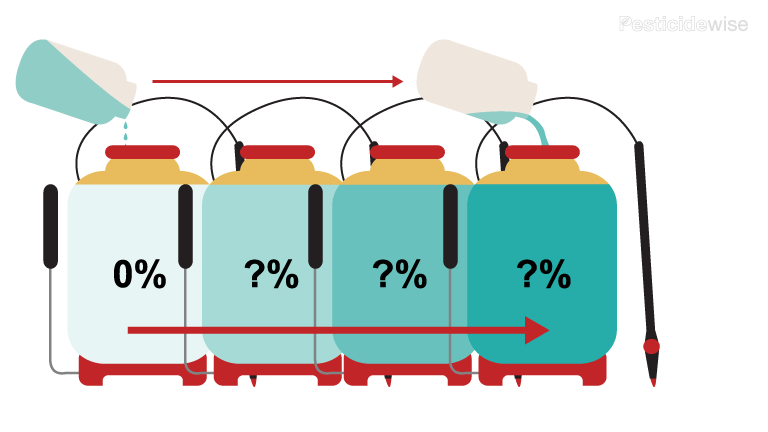Calibrate for best pest control
Learn why calibrating your knapsack sprayer will help you to control your pest. Understand more about how your pesticide dose is stated on the label to better calibrate your sprayer.
Calibrate your sprayer each time you see it
add
remove

To best control the pest troubling your crop, calibrate your knapsack sprayer each time you use it so that you apply:
- the right amount of spray mix (pesticide product mixed with water)
- over the area to be treated
- with best sized spray drops
- spread evenly over the target surfaces.

To calibrate your knapsack sprayer to produce the right spread of spray drops, you need to balance:
- the nozzle type and size
- the spraying distance (the distance of the nozzle from the target surface)
- the spraying speed (the speed at which the nozzle moves over the target surface)
- the nozzle spacing
- miniboom: the distance between nozzles mounted on a miniboom
- single nozzle: the distance of the nozzle from its position in one swath to its position in the next
- the nozzle spraying pressure.
Pesticide dose and water volume
add
remove
How you calibrate your knapsack sprayer depends on your pesticide label and how it states the pesticide dose. The dose may be given as a:
- A pesticide dose rate for a measured area.
- A pesticide dose as a concentration in water.
A pesticide dose rate for a measured area

Pesticide labels often advise a pesticide dose rate for a measured area (e.g. 4 kg/ha) with a spray mix or water volume rate (e.g. 400 L/ha). Labels may also state which type of nozzle to use at which pressure and name the drop size. For example:
| Pesticide dose and spray mix / water volume | Spraying advice example without drop size | Spraying advice example with drop size |
|---|
Apply 2 liters of product to the hectare (2 L/ha) in 200 to 400 liters of water to the hectare (200 - 400 L/ha) | Use flat fan nozzles on a boom to ensure a uniform spray distribution. Spray at 2 to 3 bars pressure. | Use a hollow cone nozzle at 3 bars pressure. Apply a small, well dispersed spray/ Apply a 'Fine' spray. |
A pesticide dose rate as a concerntration water

A pesticide dose as a concentration in water might be shown as:
- 2% of pesticide in water
- 50 ml or 50 g of pesticide in 100 L of water
- 4 L or 4 Kg of pesticide in 100 L of water.
Or the dose may be stated as an amount of pesticide for:
- one plant (e.g. 10 ml/plant)
- a number of plants (e.g. 10 ml/100 plants)
- a length of row (e.g. 100 ml/100 metres).
These can be converted into a concentration.
Some labels may also give a spray mix volume rate as a maximum amount to apply to an area e.g. "Do not apply more than 1,000 L/ha". In this case, note any advice given on the type of spray drop cover that you need to get. Then calibrate for a spray concentration in water.
Some labels may state a spray mix/water volume rate for a measured area, e.g. apply a pesticide dose concentration of 50 g in 100 L of water, using 1000 L of water per hectare. In this case convert the concentration into a dose rate for a measured area using this formula:
[Spray mix volume rate (L/ha) / litres of water stated in dose] x amount of pesticide stated in dose (L, ml, kg, g) } e.g. 50 g in 100 L of water, apply at 300 L/ha. The pesticide dose rate is { [ 300/100 ] x 50 } = 150 g/ha
Then calibrate your sprayer as for a pesticide dose for a measured area.